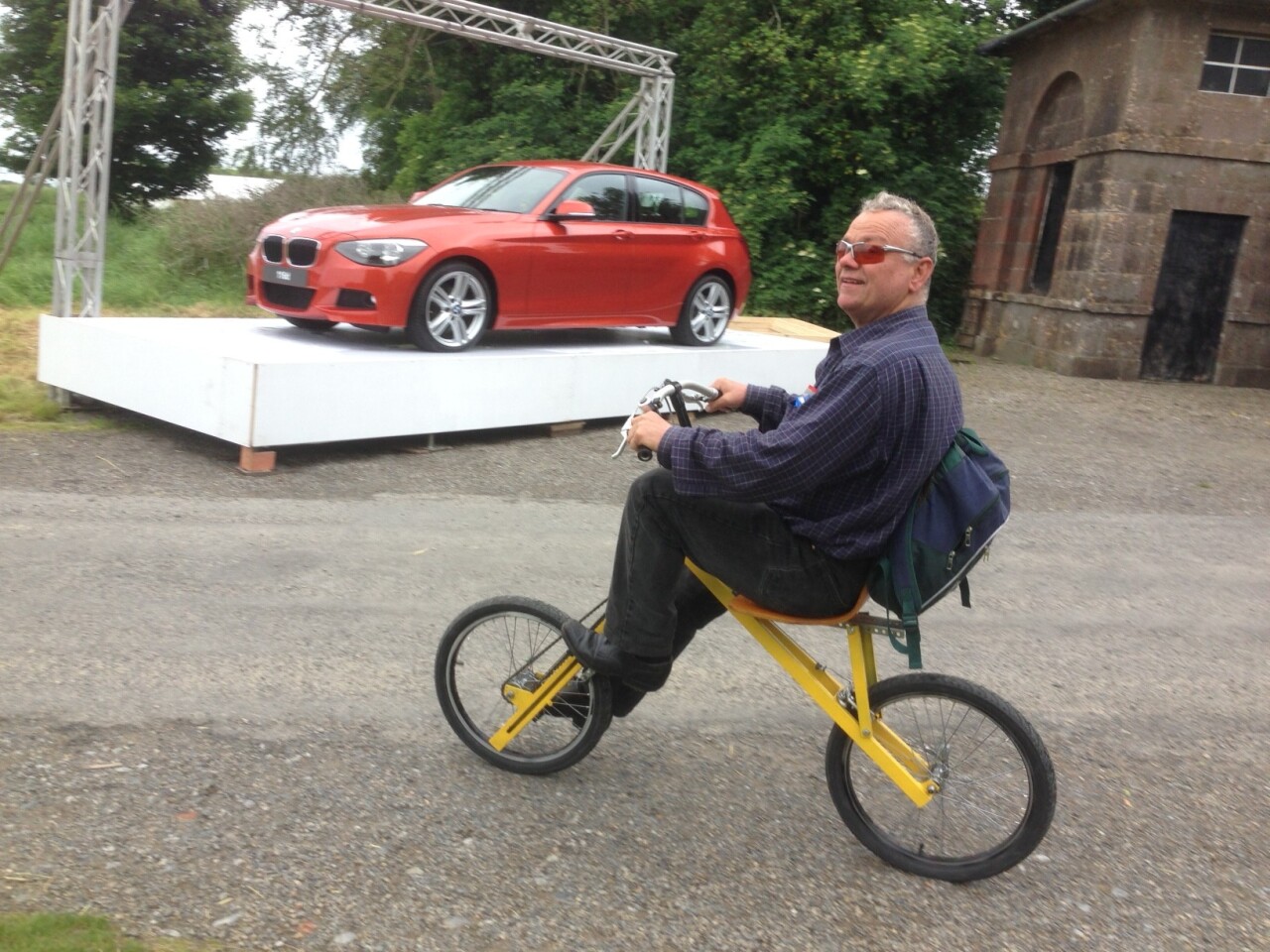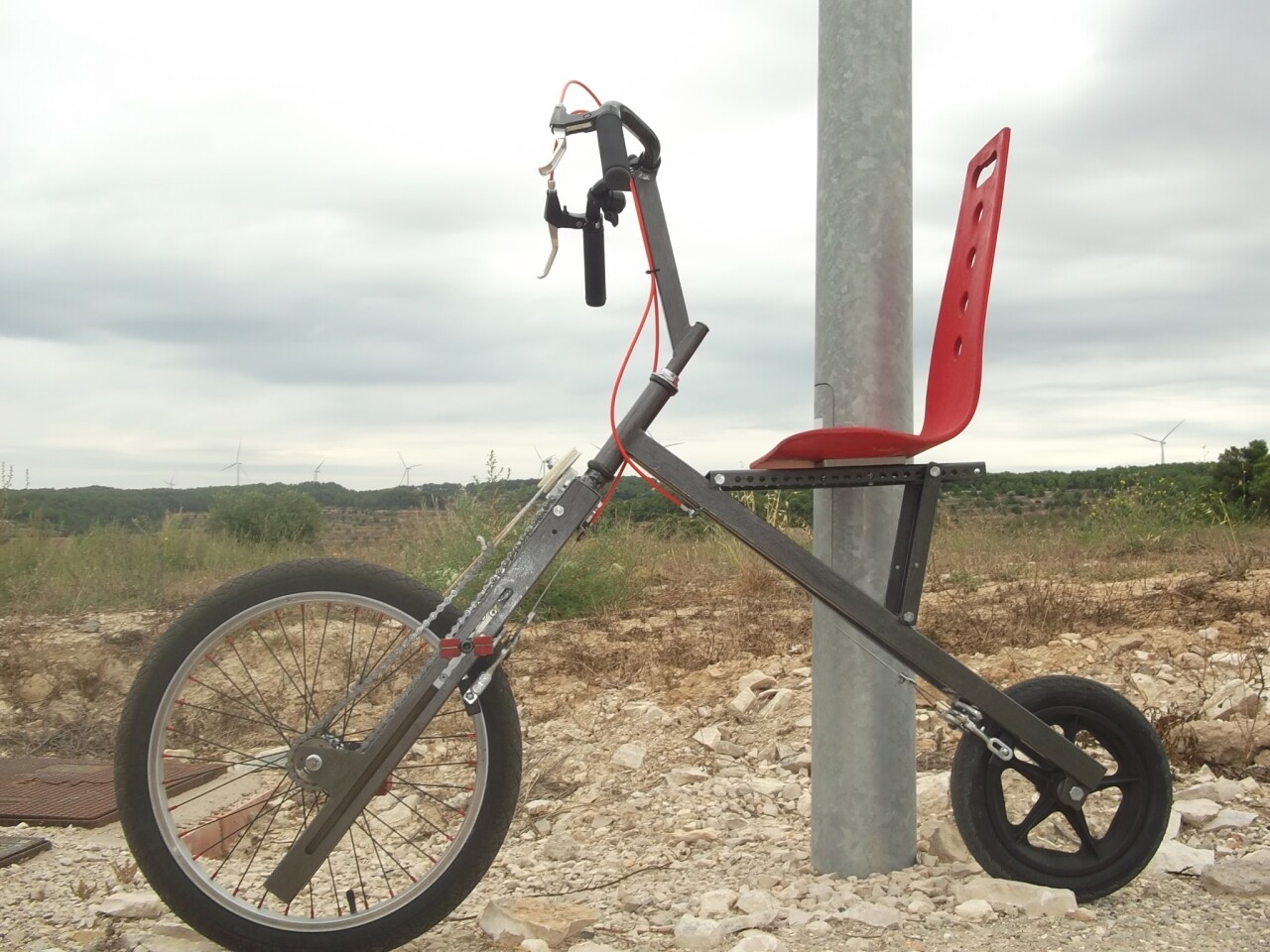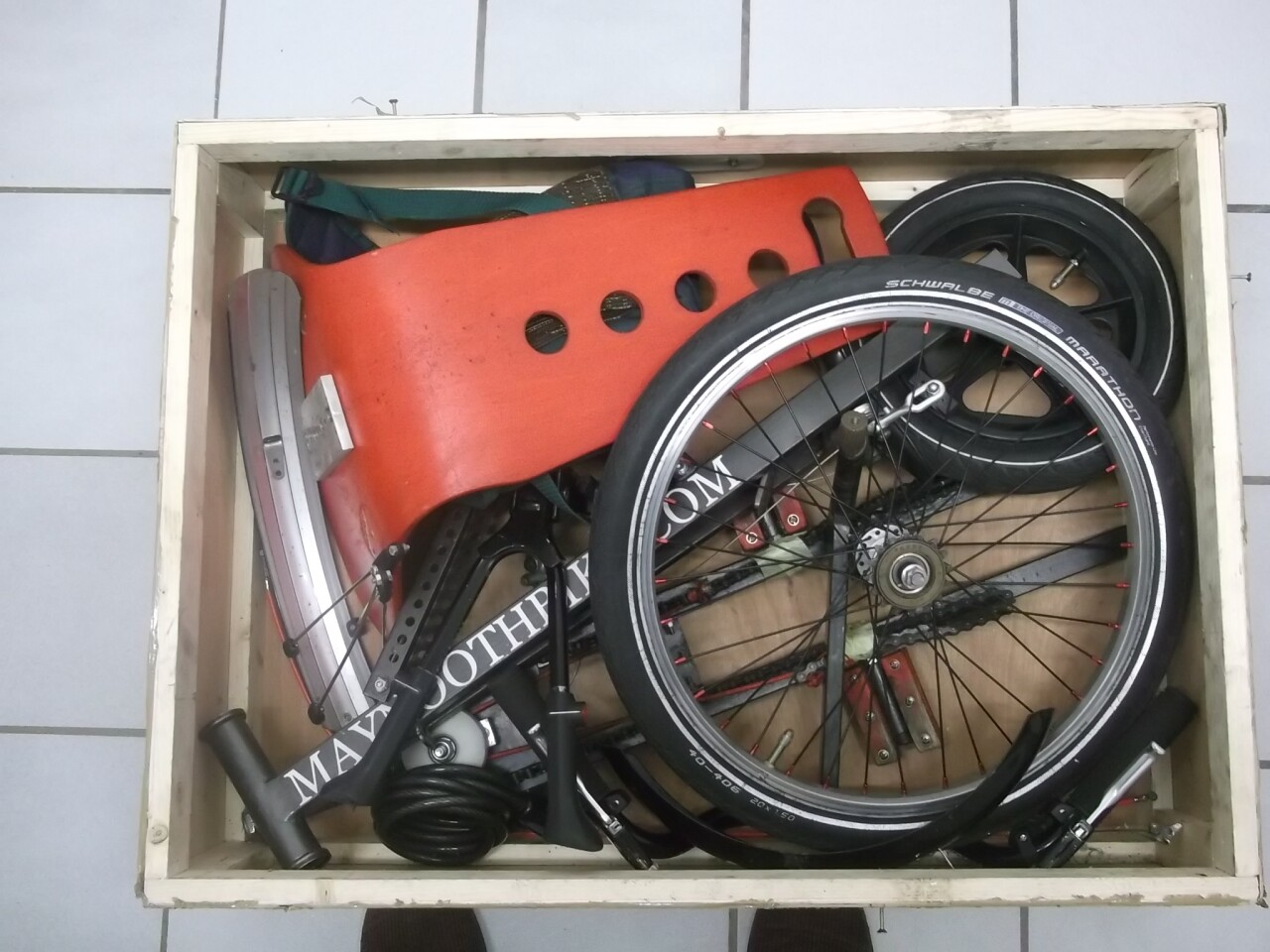Seeking to cross the relaxed-back comfort of a recumbent with a higher seating position, German engineer Christoph Lenz has innovated the MaynoothBike, named after his home in Maynooth, Ireland. In place of the usual bottom bracket-mounted crankset, the dual drivetrain is built into the fork. The linear drive not only creates a more relaxed seating position, it offers some claimed efficiency advantages, too.
Back in 2010, Lenz, an avid cyclist, found himself unsatisfied with the typical cycle options. He didn't like the high saddle or bent-forward biomechanics of traditional bike geometry, and he didn't like the low, long positioning of the recumbent. He began brainstorming, sketching designs and collecting usable parts from local scrapyards, piecing together a bike more suitable to his tastes with some help from a friend with a machine shop. He assembled and tweaked several prototypes, eventually getting a German patent for the design in 2013.
Lenz's design is a bike with pedals mounted to either side of the fork, rather than a circular-motion crankset on the bottom of the frame's midsection. When one pedal is muscled down, the other automatically comes up courtesy of the central pulley. The chain doesn't rotate full circle, but simply moves up and down in reaction to the pedal-connected inner slides. Each pedal has its own chain and set of gears, and each pedal stroke adds momentum to the freewheel sprockets mounted to the front bicycle wheel.
As applied to Lenz's initial complaints, the MaynoothBike's drive allows for a lounge-like seat with backrest. The legs aren't stretched out or raised up, and the rider is more level with traffic than on a recumbent. The rider is also lower than on a traditional bike, allowing him to put his feet to the ground with ease. Lenz has put 4,000 km (2,485 mi) on his MaynoothBike and is convinced that the design is more suited to his tastes than other bike options.

Lenz also claims that linear motion creates more efficient cycling than the traditional circular motion. His evidence is incidental, citing a race with a friend on a traditional bike and the general view that stepping is superior to spinning.
"The higher performance of a down push of the legs compared to a circular move is well known and documented," he says, without citing any specific studies. "On a step machine you will have a higher performance than on an exercise bike at the same pulse frequency."
By rethinking the drivetrain, Lenz has also created a simpler, more compact frame. Looking through Lenz's photos, it's clear that he's experimented with several different frame and wheel set-ups. The version that appears the most replaces the ubiquitous dual-triangle frame design with a single-tube fork connecting the head tube with the rear wheel and a small rear triangle supporting the seat. Lenz tells us that the most current design uses 20-in wheels in front and back, measures 1,550-mm (61 in) in overall length, and has a 1,050-mm (41.3-in) wheelbase. The seat height is adjustable between 550 and 650 mm (21.7 and 25.6 in), and the handlebars are set at around 1,080 mm (42.5 in).
Of course, while the MaynoothBike works great for Chrisotph Lenz, it's not necessarily for everyone. The linear drive allows for only a single speed, so there's no switching gears when the pedals get heavy or the ride becomes slow. Having the drivetrain built into the front fork eliminates a lot of aftermarket components designed for traditional bikes, such as a suspension fork.

They say you never forget how to ride a bike, so we imagine unlearning can be difficult. Lenz alludes to this issue on his website, saying that it can take a little while to get accustomed to the up-down pedaling and the fact that the bike can't be pushed backward. We'd also imagine that the altered biking might open a rider up to different types of muscle and joint pains and injuries.
Lenz doesn't seem all that concerned with how much of a market his design will attract. He plans to offer several levels of DIY build kits, as opposed to working on a production run of bikes. The "build a bike kit" will include the specialized components of the design that aren't readily available in shops. The €490 (plus shipping) kit will allow mechanically inclined bike hackers to build up their own linear-drive MaynoothBikes using common tools and bicycle components, without the need to weld, mill or metal turn. For those that are less mechanically inclined, Lenz also plans to offer a full "bike in a box," which can be assembled within half an hour, for €980 plus shipping.

Lenz launched a crowd-funding campaign earlier this year in an attempt to fund the launch of the build kits. While he fell short of his goal, he received enough interest to pursue the launch and plans to have the kits available within the next six weeks. He also plans to sell spare parts via his website, which is linked below. He has been touring bike shows around Europe to show the MaynoothBike to interested gear heads.
For those that have access to specialized tools and shops, Lenz currently offers a pamphlet with basic information, drawings and instructions. It comes complete with a MaynoothBike serial number and provides access to a community, where users can share information about their builds, ask questions, provide tips on metal workshops and suppliers in the area, etc. That pamphlet is available in both German and English for €15, including shipping.
We're not sure whether or not we'd like the ride of the MaynoothBike more than the average bicycle, but we love Lenz's tenacity in seeing his design through. We also like that he's passing that spirit along to others, fostering a hacking community rather than simply selling a production model for thousands of euros. We hope to cover more MaynoothBike designs in the future.
Source: MaynoothBike




















